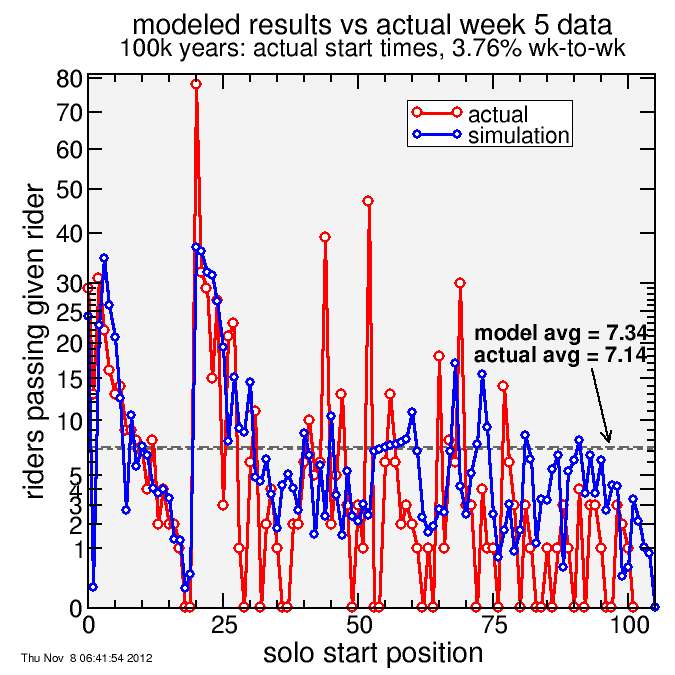Passing analysis of 2012 Low-Key Hillclimbs week 5
I wanted to compare how passing on last Sunday's Low-Key Hillclimb compared with expectations. So this time I made a few changes to my simulation relative to the week before:
- I used actual rider start times, including missing riders, rather than assuming every rider showed up and started at even intervals.
- I used actual rider ranking scores, using maximum score in a ride this year, or maximum score in the most recent ranking year available for the rider with a 1%/year depreciation rate. For riders who had not before done a Low-Key, I assumed a modified normal distribution with a 14.4% sigma (I modify it to an asymmetric probability distribution which can only asymptotically approach zero).
- I changed the rider week-to-week variation to 3.76%, which I extracted from scoring data this year weeks 1-5 by comparing variation in rider scores for the same rider on different weeks. This number is the rms variation from one week to another divided by sqrt(2), since I assume week-to-week variations are uncorrelated.
- I applied a "slope factor" for the week of 1.081, implying it takes a 1.086% change in score to yield a 1% change in speed. This was extracted by the scoring code, which uses it to balance the distribution of scores in different weeks.
I omitted tandems, and as before, I assume no rider is passed by and subsequently passes the same other rider. I guessed a reference (100 point) male finish time of 65 minutes based on the Strava KOM. The actual median turned out to be 65:24.
The result was the average rider was passed by 7.343 others, and passed the same number of others. The rider getting passed the most was passed by 86 riders in 100 thousand iterations. The rider passing the most passed 47.
When I ran the actual numbers I was pleased. The average rider passed, and was passed, 7.14 times. One rider was passed 78 times. Another rider passed 23 others.
Here's a plot of passes versus start position. One rider didn't finish, and that introduces an offset of one along the way, but I didn't worry about that. The agreement was very nice, I thought, making this a useful tool for future rides.


Comments